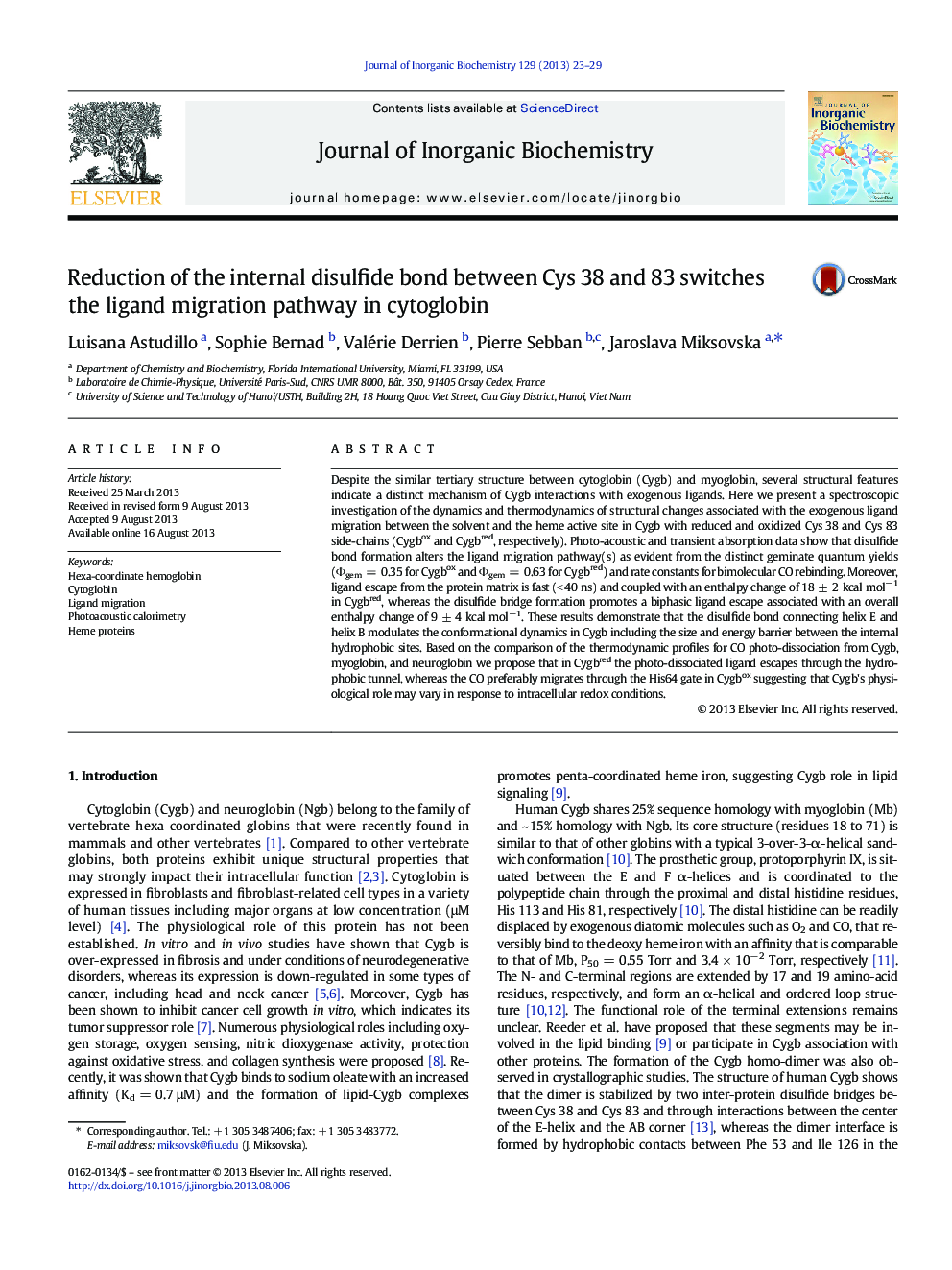| کد مقاله | کد نشریه | سال انتشار | مقاله انگلیسی | نسخه تمام متن |
|---|---|---|---|---|
| 1317487 | 1499458 | 2013 | 7 صفحه PDF | دانلود رایگان |

• The internal disulfide bond in Cygb modulates the mechanism of CO escape from the protein.
• Slow (τ > 40 ns) CO escape from Cygbox evokes a His gate mechanism for CO migration.
• Hydrophobic channel provides a ligand escape pathway in Cygbred.
• Internal disulfide bond alters the CO escape through internal cavities remodeling.
Despite the similar tertiary structure between cytoglobin (Cygb) and myoglobin, several structural features indicate a distinct mechanism of Cygb interactions with exogenous ligands. Here we present a spectroscopic investigation of the dynamics and thermodynamics of structural changes associated with the exogenous ligand migration between the solvent and the heme active site in Cygb with reduced and oxidized Cys 38 and Cys 83 side-chains (Cygbox and Cygbred, respectively). Photo-acoustic and transient absorption data show that disulfide bond formation alters the ligand migration pathway(s) as evident from the distinct geminate quantum yields (Φgem = 0.35 for Cygbox and Φgem = 0.63 for Cygbred) and rate constants for bimolecular CO rebinding. Moreover, ligand escape from the protein matrix is fast (< 40 ns) and coupled with an enthalpy change of 18 ± 2 kcal mol− 1 in Cygbred, whereas the disulfide bridge formation promotes a biphasic ligand escape associated with an overall enthalpy change of 9 ± 4 kcal mol− 1. These results demonstrate that the disulfide bond connecting helix E and helix B modulates the conformational dynamics in Cygb including the size and energy barrier between the internal hydrophobic sites. Based on the comparison of the thermodynamic profiles for CO photo-dissociation from Cygb, myoglobin, and neuroglobin we propose that in Cygbred the photo-dissociated ligand escapes through the hydrophobic tunnel, whereas the CO preferably migrates through the His64 gate in Cygbox suggesting that Cygb's physiological role may vary in response to intracellular redox conditions.
Reduction/oxidation of the Cys38 Cys83 modifies the ligand migration in cytoglobin. In the absence of the internal disulfide bond, the ligand escape from the protein is fast and occurs through a hydrophobic channel. Formation of an internal disulfide bond promotes the CO escape through the “so-called” histidine gate.Figure optionsDownload as PowerPoint slide
Journal: Journal of Inorganic Biochemistry - Volume 129, December 2013, Pages 23–29